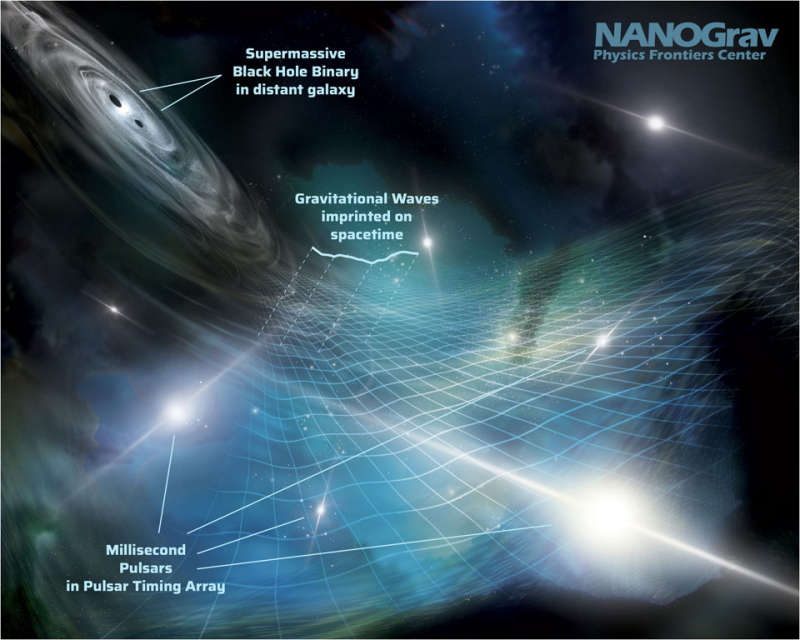
|
Explanation: Monitoring 68 pulsars with very large radio telescopes, the North American Nanohertz Observatory for Gravitational Waves (NANOGrav) has uncovered evidence for the gravitational wave (GW) background by carefully measuring slight shifts in the arrival times of pulses. These shifts are correlated between different pulsars in a way that indicates that they are caused by GWs. This GW background is likely due to hundreds of thousands or even millions of supermassive black hole binaries. Teams in Europe, Asia and Australia have also independently reported their results today. Previously, the LIGO and Virgo detectors have detected higher-frequency GWs from the merging of individual pairs of massive orbiting objects, such as stellar-mass black holes. The featured illustration highlights this spacetime-shaking result by depicting two orbiting supermassive black holes and several of the pulsars that would appear to have slight timing shifts. The imprint these GWs make on spacetime itself is illustrated by a distorted grid.
Open Science:
Browse 3,000+ codes in the Astrophysics Source Code Library
|
January February March April May June July August September October November December |
| ||||||||||||||||||||||||||||||||||||||||||||||||
NASA Web Site Statements, Warnings, and Disclaimers
NASA Official: Jay Norris. Specific rights apply.
A service of: LHEA at NASA / GSFC
& Michigan Tech. U.
Based on Astronomy Picture
Of the Day
Publications with keywords: universe - gravitational radiation
Publications with words: universe - gravitational radiation
See also:
- APOD: 2025 November 23 Á The Observable Universe
- APOD: 2025 September 24 Á GW250114: Rotating Black Holes Collide
- APOD: 2024 December 1 Á Cosmic Latte: The Average Color of the Universe
- APOD: 2024 October 20 Á Dark Matter in a Simulated Universe
- APOD: 2024 July 1 Á Time Spiral
- Simulation: Two Black Holes Merge
- APOD: 2023 December 31 Á Illustris: A Simulation of the Universe
